One of my recent experiences flying an Airbus A350 with Delta involved a boarding process that began 55 minutes before the scheduled departure time. We began boarding at 12:50 for a 13:45 flight.
Meanwhile, Japan Airlines boarded my Airbus A350-1000 (mind you, a longer A350 than Delta’s) yesterday in 25 minutes.
I’m no stranger to this; this was in fact my fourth A350-1000 with Japan Airlines in the last six months. However, it’s always hard not to notice the difference in the boarding experience whenever I fly them. This efficient process is even more pronounced on domestic flights, where the airline will begin boarding 15 to 20 minutes before departure time.
There are many articles and discussions about this online, and a lot of them talk about the Japanese people’s precision and ability to follow instructions. I’m sure that certainly plays a role, but there are several things Japan Airlines (and other airlines in Japan and Asia) does well that I think contribute more.
All passengers in the world are able to make this work on Japan Airlines; it’s not just Japanese people. Given the severe lack of Japanese people traveling overseas in recent years, the demographic of the airline’s international flights is very diverse and international. Despite this, the boarding process is still efficient as ever, which suggests that the airline is doing several things right.
These are a few of them that I believe are contributing factors:
Back-to-Front Boarding in Economy
This is perhaps the biggest contributing factor.
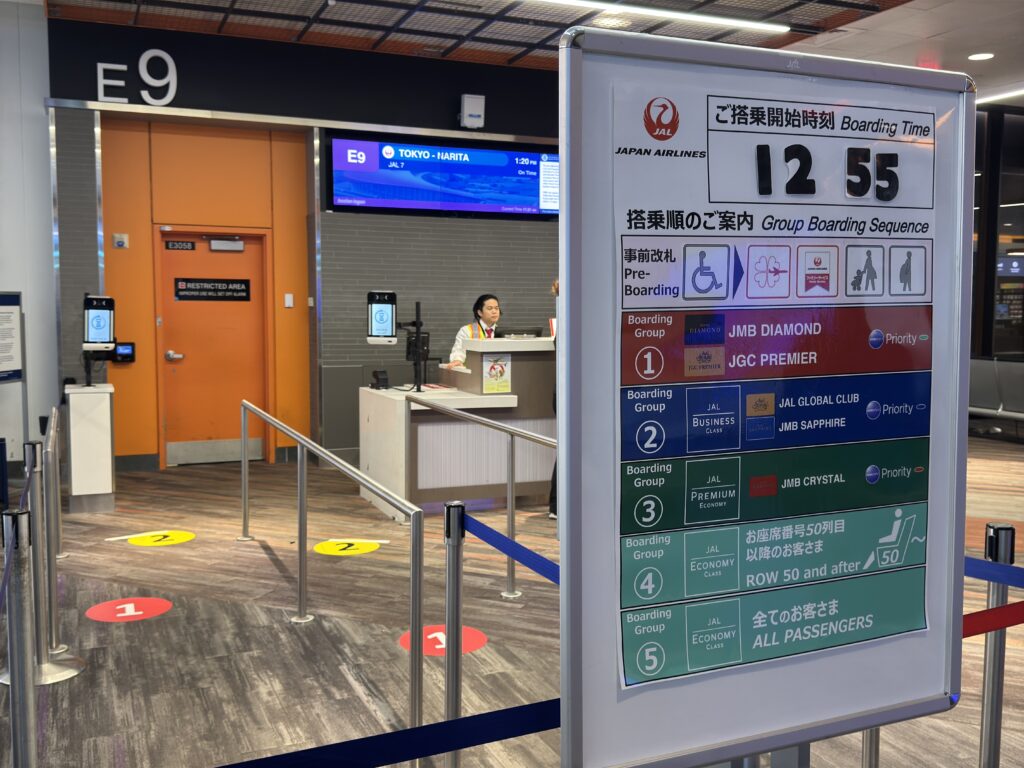
Japan Airlines has 5 boarding groups in the following order:
- Group 1: First class (if applicable), JMB Diamond, JGC Premier, Oneworld Emerald
- Group 2: Business class, JMB Sapphire, JAL Global Club, Oneworld Sapphire
- Group 3: Premium economy, JMB Crystal, Oneworld Ruby
- Group 4: Economy, rows 50 and after
- Group 5: All remaining passengers in economy
The key to an efficient boarding process is to keep the jet bridge and aisles moving. In other words, keep passengers out of each other’s way, and groups 4 and 5 make this work.
Passengers towards the back board first, so that when passengers in rows 49 and above board, you’re able to minimize conflict points of people blocking each other’s way, stowing their bags in the overhead bins, etc.
I actually argue that this works better than window-first boarding. With window-first, you still have passengers of all rows boarding simultaneously, and the aforementioned conflict points still exist (this is not to say window-first doesn’t have its benefits).
Groups 1 and 2 are also kept simple. Group 2 tends to be huge on Japan Airlines flights, but since business class seats offer enough space for passengers to get out of each other’s way, the potential conflict points are less of an issue.
Imagine if AAdvantage Executive Platinum, Platinum Pro, and First Class all boarded at the same time on American Airlines. That would be the equivalent here.
Gates are Well Staffed
This was a Japan Airlines flight to London that was boarding next to my gate, which was also operated by an Airbus A350-1000.
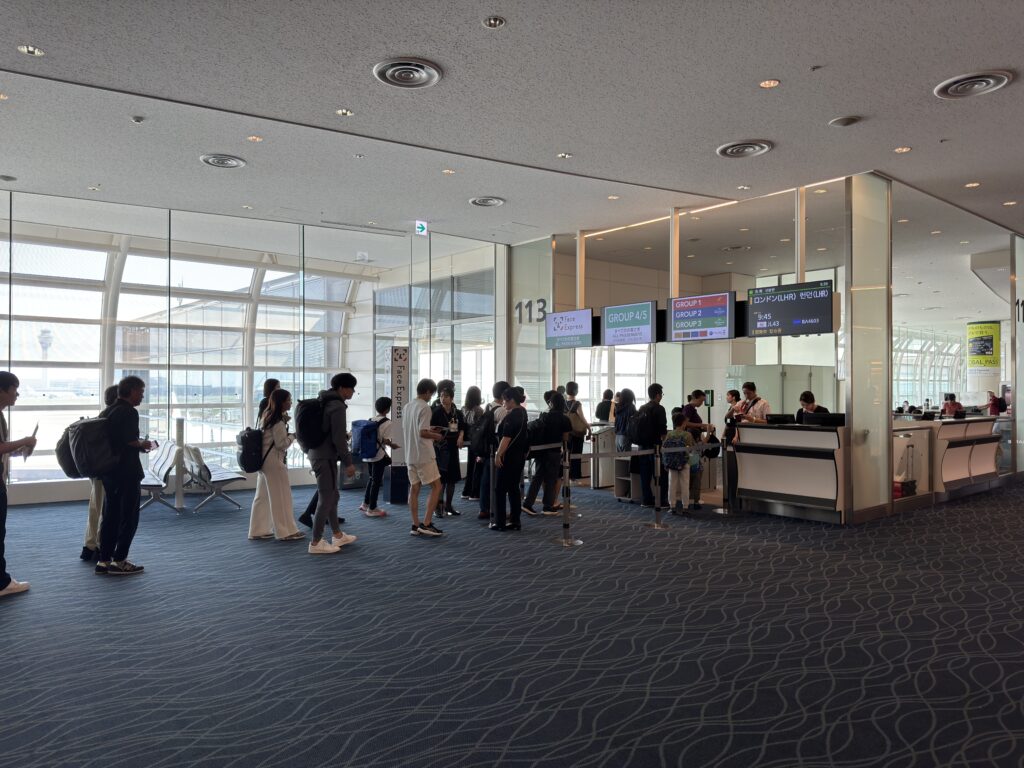
In this image alone, I’m able to count six Japan Airlines staff (and there may have been more). By comparison, I’ve had international flights on Delta with just three staff, with just one or two of them scanning boarding passes.
The benefit of a well staffed gate isn’t limited to scanning boarding passes efficiently:
- There will always be a staff member available to help in case somebody needs help; no need for the boarding process to slow down
- On international flights, staff members are available to verify passports while passengers are still in line to scan their boarding pass
Boarding Gates with Technology
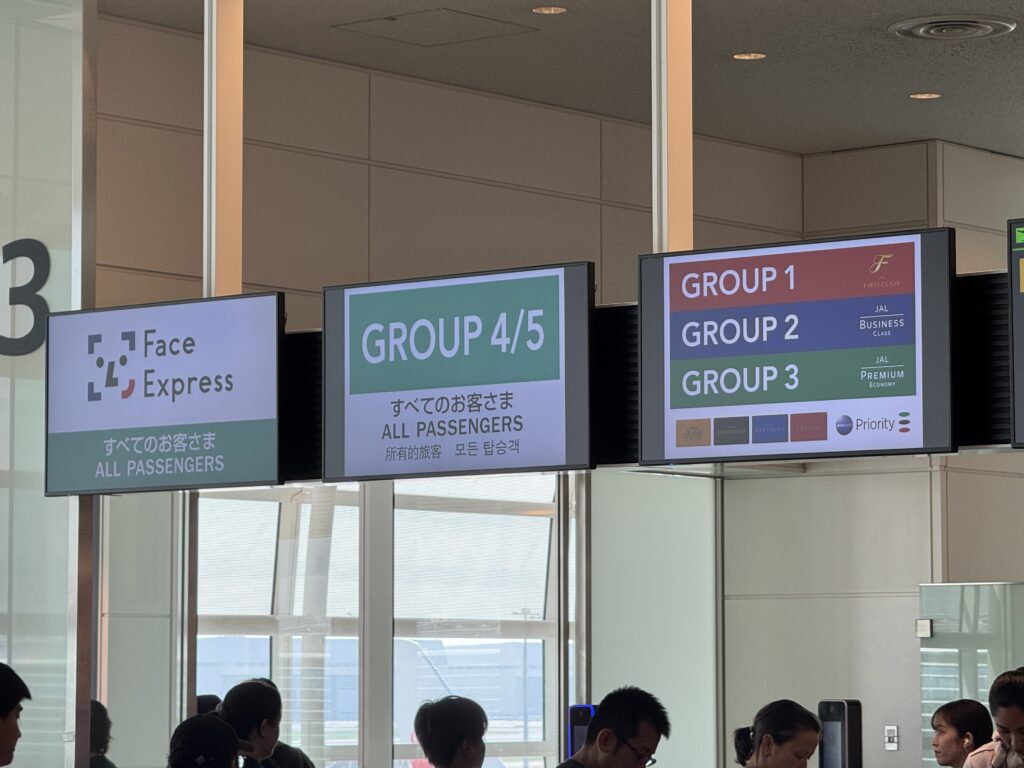
This one is more limited to certain airports, but I’m sure it still plays a role.
Select airports in Japan, such as Haneda and Narita, sometimes utilize facial recognition when boarding (I’m led to believe that the facial ID is acquired when passengers exit Japan at immigration/customs).
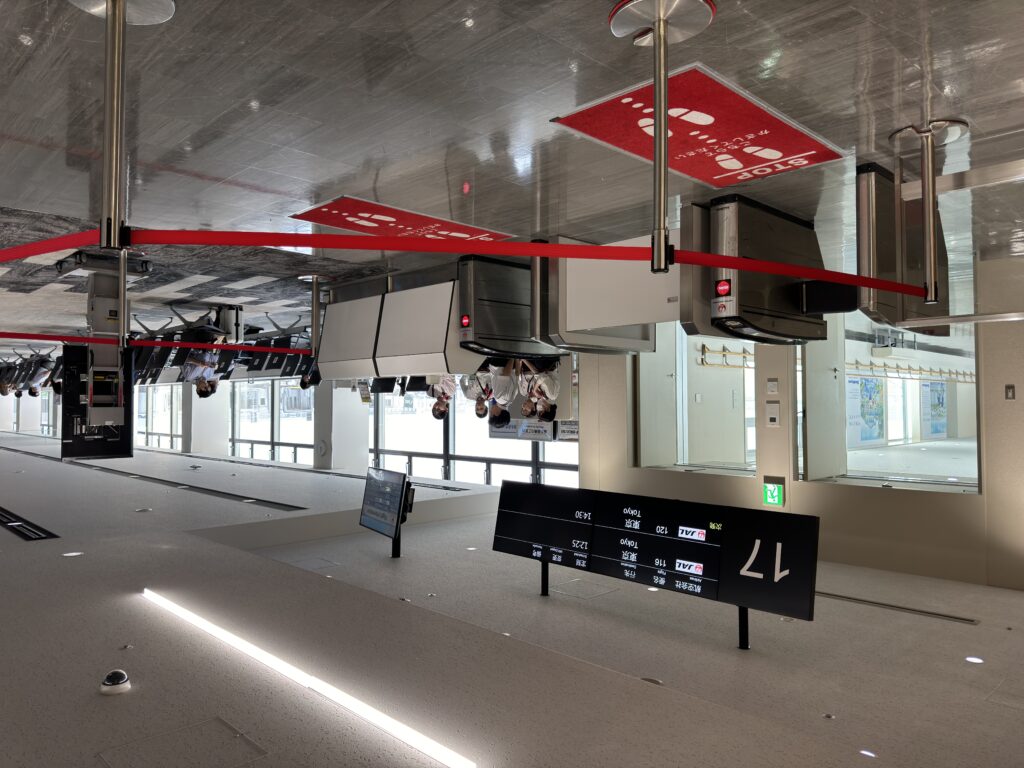
Many Japanese airports also use turnstiles, especially on domestic flights. Passengers scan their boarding pass, and the gate opens, ensuring a smooth flow. Gate agents, of course, are by the gates, keeping an eye and making sure passengers don’t have any issues going through.
Additionally, Japan Airlines credit cards come with an IC chip, meaning cardholders can just tap their card at the turnstile and go through, just like at a train station.
Compare both of these to a QR code on a phone that gate agents in the US scan using a flimsy scanner.
Bottom Line
Japan Airlines proves that boarding doesn’t have to be a crappy experience. Being able to provide an efficient service not only on domestic, but international flights as well is a testament to what they do right. Sure, the airline might miss out on the ego-striking factor of high elite members with simple boarding groups, but I’m sure that being able to turn around an aircraft quickly with efficient boarding is a fair return.
All photos taken by the author.

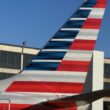


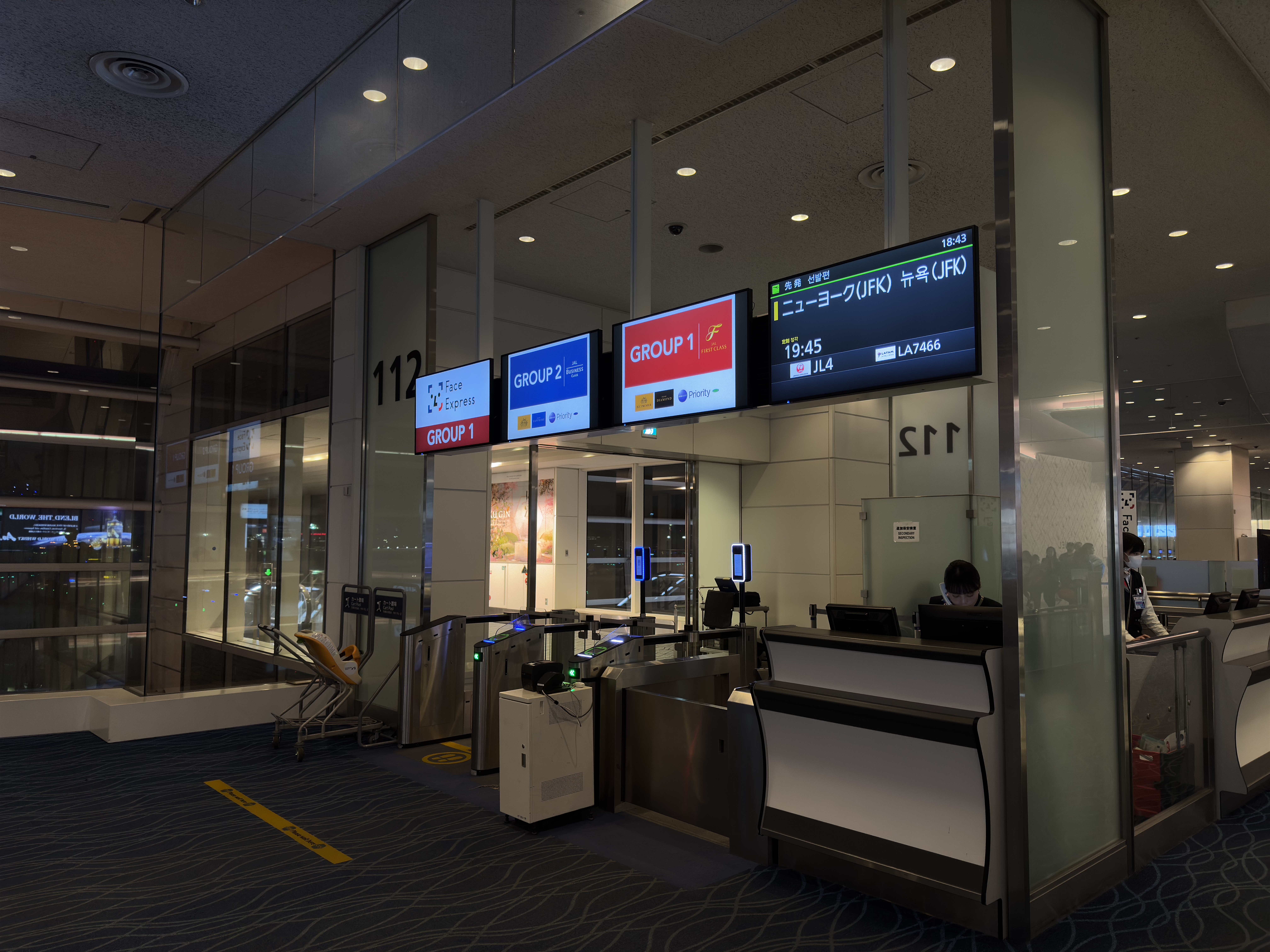
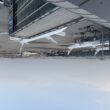



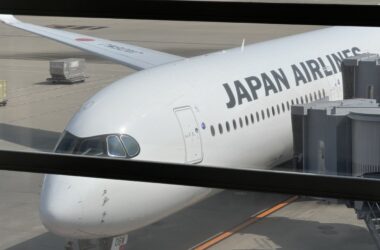
Points I can add
ANA is pretty much the same with the boarding groups.
At some airports a widebody utilizes two doors to board. The front door for the right side of the plane and the second door is used for the left side, basically treating the plane like two narrowbodies rather than boarding everyone through the same door.
Travelers in Japan seem to have a lot less carryon baggage than in the US. I’ve been one of the last to board a widebody and still had the overhead to myself on a few occasions.
It probably is a combination of people traveling with less luggage due to takkyubin services and more checked bags since the airlines actually take care of checked baggage.